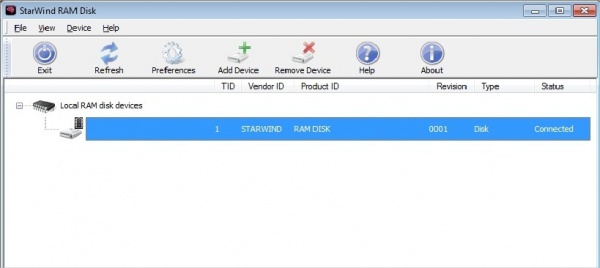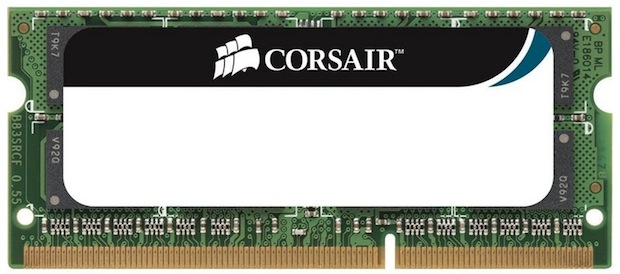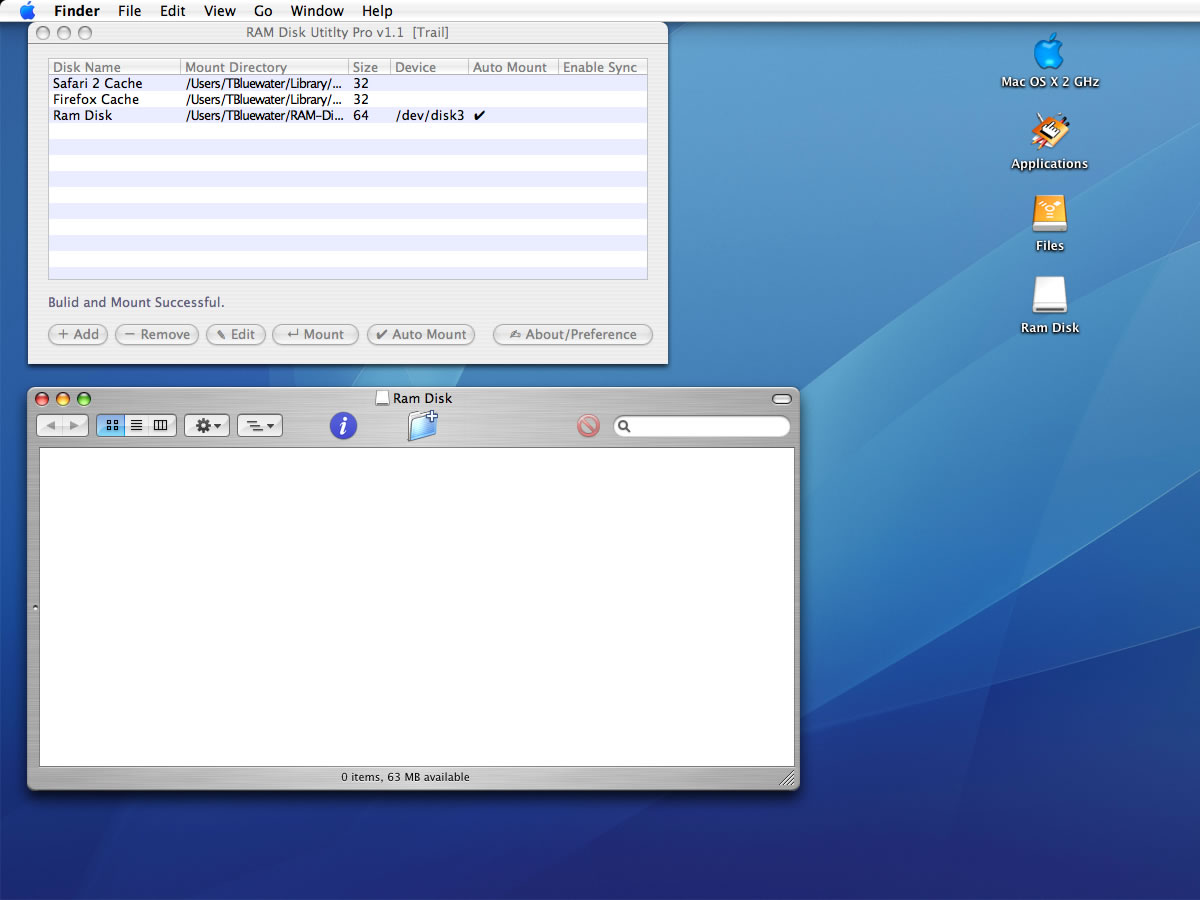

You can also work with on-disk images and RAM disks associated with on-disk files to preserve your data between sessions.

This product lets you create any number of virtual RAM disks limited only by the available memory. Modern computers are equipped with many gigabytes of RAM, and most of the time there is a lot of unused memory that could be used as a high-performance alternative to the slower HDD storage. This is particularly valuable for solid-state drives (SSD), which have a limited number of writes. As Windows and other third-party applications often create a large number of temporary files for a short time only, using a RAM disk will extend the lifespan of your hard disk by sparing it from excessive reading and writing. Furthermore, Windows can be configured to use the RAM disk for temp files, so that the system and most other applications would use the fast in-memory disk for their temporary data. SoftPerfect RAM Disk creates a virtual disk residing in the computer RAM accessible in Windows Explorer and other applications, allowing you to store any temporary information on this disk. Whatever your job is, read on to find out what a RAM disk can offer you. As the memory is much faster than physical hard disks, storing temporary data on a fast in-memory disk achieves a higher performance. SoftPerfect RAM Disk is a high-performance RAM disk application that lets you have a disk on your computer stored entirely in its memory. I handled that by a custom desktop with 32 cores and 256GB of RAM, but it is nice to have a laptop for travel photography.RAM Disk for Windows Increase computer performance and SSD lifespan That said, I admit some bias, as one of my other interests is computational fluid dynamics, and 16-64GB of RAM in that application means that certain CFD solver simulations will run for hours (if not a day or two) performing enough iterations for the residuals to indicate convergence on a solution. Clearly 16-64GB works for others here, but I have found 64GB downright marginal for my image processing. Maybe noone that works for Apple is into large-print photography. Perhaps their photographic norm is a 12MP iPhone photo. Not all of us just process or print at whatever file size Apple seems to think is adequate. Perhaps they can cope with that, but I am skeptical when they struggle to handle a single - albeit huge - image. Supposedly, these Mac/Macbook Pros are intended for professional video editing. Should you decided that you want to use Gigapixel AI in the future, it would be nice to be able to do something with it, and that will be much easier with 64GB than 16GB. It doesn't feel good to pay $6K for any tool and see it struggling to cope with the job at hand. More RAM will help hold off obsolescence longer, at least to some degree.Ĭertainly others here have had different experiences with image processing - at least with LR or Capture One - but I was surprised when I got my 64GB MacBook Pro last December and saw it bogged down completely by Gigapixel AI. For that reason I was tempted to get a base model (32gb) instead for almost a not wait.

it’s a 3 months wait and my current imac is of no help. Wow I had no idea about ramdisk, thank you, although too late for me. Of course, having a fast processor and board with a fast bus also helps matters greatly. I have 128GB of DDR5 RAM and often create a 32GB or 64GB RAM drive for gigapixel imaging.

A RAM disk can be persistent (as long as the power remains on), or you can create and destroy them on the fly. Then you get I/O speeds that even blow away NMVe storage. If you do get a lot of excess ram, you could get RAMDISK - a little program that creates a virtual RAM disk drive out of whatever amount of memory you specify and can copy files to that RAM drive for heavy-duty manipulation just like any other drive.


 0 kommentar(er)
0 kommentar(er)
